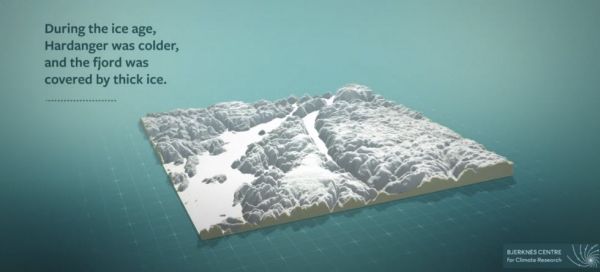When the last ice age was over, a large glacier covering the 1000 meter deep Hardangerfjord collapsed. These events at the end of the ice age in Norway, resemble what we are about to witness in today’s Greenland.
The Hardanger region in southwestern Norway is famous for a mild climate, steep rock walls and delicious apples. Towards the end of the last ice age, things were different. Climate was frigid, too cold for humans to settle, let alone apple trees. The Hardangerfjord Glacier reached from the Hardangervidda plateau in the east, towards the island Halsnøy towards the west. These gravelly islands were themselves created a few centuries earlier, by the bulldozing force of the glacier. This Norwegian ice-age landscape reminds us of the coasts of Greenland, with impressive fjords hosting glaciers and icebergs.
A new study reveals how climate warming at the end of the last ice age caused the great glacier covering Hardanger to collapse around 11.000 years ago. The study is done by a team of scientists from the University of Bergen, the Bjerknes Centre for Climate Research, the University of Svalbard, Stockholm University, and the Bolin Centre for Climate Research. The findings are now published in the journal Quaternary Science Reviews.
Continue reading at Bjerknes Centre for Climate Research
Image via Bjerknes Centre for Climate Research


